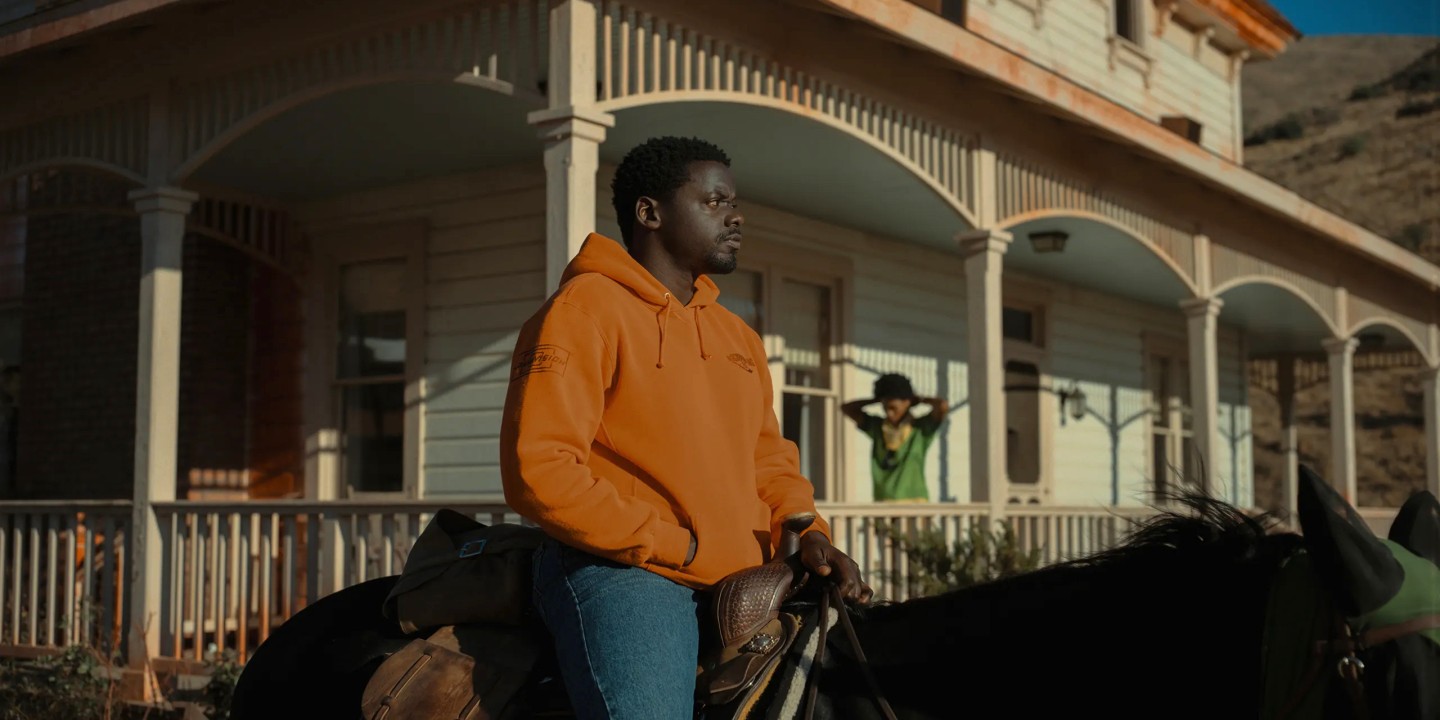Nope and Prey represent a new kind of alien invasion film
Both movies critique the assumption that survival requires dominance.

“Right here you are going to witness an absolute spectacle,” says Ricky “Jupe” Park (Steven Yeun) to a paltry crowd at his small kitschy Western theme park in Southern California in Jordan Peele’s most recent sci-fi/horror film Nope (available to rent via various streaming platforms). Jupe suspects that something monstrous and bizarre is haunting the skies above this open ranch country, and he thinks he can bait it with a horse to give his audience the show of their lives. It’s a spectacle alright. Just not the one Jupe thought he could orchestrate.
Jupe gets his horse bait from Haywood Hollywood Horses, the only Black-owned business that trains horses for Hollywood. OJ Haywood (Daniel Kaluuya) and his sister Emerald “Em” (Keke Palmer) inherited the family business when their father was killed by mysterious debris falling from the sky. It doesn’t take long for OJ and Em to get suspicious about what is happening in the skies above their ranch, too. They are determined to capture whatever it is on film, with the hopes of cashing in on their own “Oprah moment.”
Read our latest issue or browse back issues.
Peele has emerged as one of the great living filmmakers by marrying the genre conventions of science fiction and horror with deep, layered social commentary. His first two films Get Out and Us dealt especially with race in America, literalizing anti-Black violence through horror plots. In Nope Peele wants us to think about the ways spectacular entertainment relies on cruelty and manipulation—to animals, to minority actors, to the gullible public—and about how we can see this truth with our own eyes and still not look away.
The movie opens with an epigraph from the Book of Nahum: “I will make a spectacle of you.” In Nahum this is meant as divine judgment in its most metaphorically graphic form, signaling horrifying catastrophe. In our entertainment-saturated culture, our spectacles are our own doing, and Nope highlights this fact with its own form of catastrophic judgment.
These themes are both implicit and explicit. The film is divided into five chapters, each named after a different animal, forcing us to see the plot as directly connected to animal exploitation, including the alien creature. But some of these themes are layered more obliquely, like in a series of somewhat disjointed flashbacks to Jupe’s past as a child actor, playing a White family’s adopted Asian son on a cringy sitcom.
OJ and Em emerge as the unlikely heroes of the film because they are the only characters with the sense to be properly afraid. They aren’t immune to the spectacle-seeking culture that is under judgment. But when they are confronted with the full spectacle of danger in front of them, their instinct is to utter the “nope” of the title and back away.
This is something they share with the heroine of another wildly popular—and fantastically compelling—alien invasion movie, Prey (directed by Dan Trachtenberg, streaming on Hulu+). Technically the fifth movie in the Predator franchise, its premise—alien invasion in the Comanche Nation in the early 1700s—sounds like a bunch of writers clutching at straws about what aliens could possibly fight next (“I know, what about Indians!”). But the Native creative team knew what they were doing, and the result is a surprisingly earnest, visually beautiful, action-packed coming of age story with a gentle feminist kick.
Naru (Amber Midthunder) is a young Comanche woman who dreams of breaking social decorum and becoming a hunter-warrior like her brother Taabe (Dakota Beavers). She isn’t forbidden from this path because she’s a woman, but her community is certainly skeptical of her ability to get the job done. When the alien predator shows up cloaked in a shimmering invisibility shield and starts slicing and hacking his way through the 18th-century food chain, Naru is the only one who believes he exists and, later, the only one left to take him on.
Running parallel to the Predator’s arrival, French trackers have also shown up on the plains, leaving their own bloody trail of wasteful violence. There is an obvious connection being drawn between one alien invader and the other, and Naru’s ability to see the threat of the one from outer space also lets her guess at the longer-term danger posed by the French. Naru can evade both threats because she has a heightened sense of fear. This was the very thing that made her brother doubt her abilities as a hunter, but it turns out to be her superpower.
Alien invasion stories usually come in two varieties. In one, human bellicosity and bullheadedness threaten intergalactic war against benevolent alien explorers. In the other, aliens are violent invaders who must be outsmarted and destroyed by humans’ superior force or intelligence. Both Nope and Prey scramble this dichotomy. The aliens do not come in peace, but each film critiques the assumption that survival requires a form of dominance—to harness everything into the power of money-making spectacle or to defeat it by sheer force. OJ, Em, and Naru outsmart their foes through a deeper instinct of survival, which requires them to pay attention to what everyone else around them refuses to notice. This makes both films spectacles worth paying attention to.







